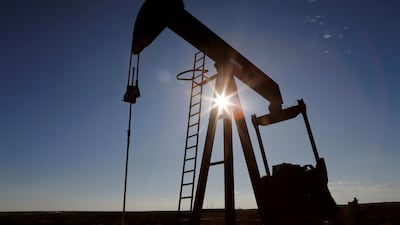Global oil demand for 2021 is expected to be lower than previously forecast amid a higher count of Covid-19 infections, which has led to lockdowns in many countries, according to the International Energy Agency.
The Paris-based agency slashed its demand forecast for the first quarter by 600,000 barrels per day, compared with its previous estimate. The IEA also lowered its full-year assessment by 300,000 bpd as it expects demand to pick up during the second half of the year.
"It will take more time for oil demand to recover fully as renewed lockdowns in a number of countries weigh on fuel sales," the IEA said in its latest monthly market assessment.
The agency forecasts demand will pick up by 5.5 million bpd to 96.6m bpd this year, reversing an unexpected collapse in consumption by 8.8m bpd last year as the Covid-19 pandemic hit.
The supply of crude is also expected to increase, rising by over 1m bpd in 2021 after declining by a record 6.6m bpd last year.
With Opec+ expected to gradually bring on more supply later this year, the IEA noted that there may be "scope for higher growth given our expectations for further improvement in demand" in the second half of the year.
The 23-member alliance of producers eased their supply cuts earlier this year and are gradually expected to bring more supply back into the markets.
The group is currently cutting back 7.2m bpd, after withholding an historic 9.7m bpd last year at the height of the pandemic-induced demand decline.
Saudi Arabia, the largest exporter within the group, pledged to deepen its commitment and volunteered to cut 1m bpd for February and March.
The group had earlier considered bringing 2m bpd of supply back from the beginning of January.
"After holding flat at 92.8m bpd in December, global supply is rising this month with Opec+ due to ramp up during January, the IEA said.
"Higher demand will allow supply to start rising this year," the market report added.
The world will require "more oil" as demand substantially improves later this year, meaning Opec+ will eventually lower its curbs to 5.8m bpd, in line with their earlier agreement last year, the IEA expects.
The agency also made a note of higher oil prices, which have rallied since the beginning of the year.
Crude benchmarks surged 10 per cent on the back of a weak dollar, vaccine rollouts in various parts of the world, as well as the possibility of additional stimulus for the US economy.
The agency also expects a stronger drawdown of oil inventories, should Opec+ achieve 100 per cent compliance with the latest agreement. Global oil stocks are expected to reduce by 1.1m bpd or 100 million barrels in the first quarter. There is potential for "much steeper declines" during the second half as demand strengthens, the report added.
IEA executive director Fatih Birol said earlier this month that US shale extraction was "profitable" at current prices, which could lead to a rebound in activity.
"Higher crude prices could also provide an incentive to increase production by the US shale industry, which saw the biggest fall in output last year," the agency said in its report.
If US companies continue to stay committed to pledges to restrict production, Opec+ could have a chance to reclaim market share lost to the independents since 2016.
Brent, the international marker, was up 1.19 per cent, trading at $55.40 per barrel at 2.10pm UAE time. West Texas Intermediate, which tracks US crude grades, was up 0.38 per cent at $52.56 per barrel.
Dubai-based Emirates NBD said in a note on Tuesday that it expects to see inventories decline by 1.3m bpd in 2021, compared with a build-up of 3m bpd last year.
"The biggest question mark to us remains the second quarter, when Opec+ countries notionally should add volume back to the market," the bank said.
The lender maintained its price assumptions for Brent futures at $50 per barrel and for WTI at $47.


